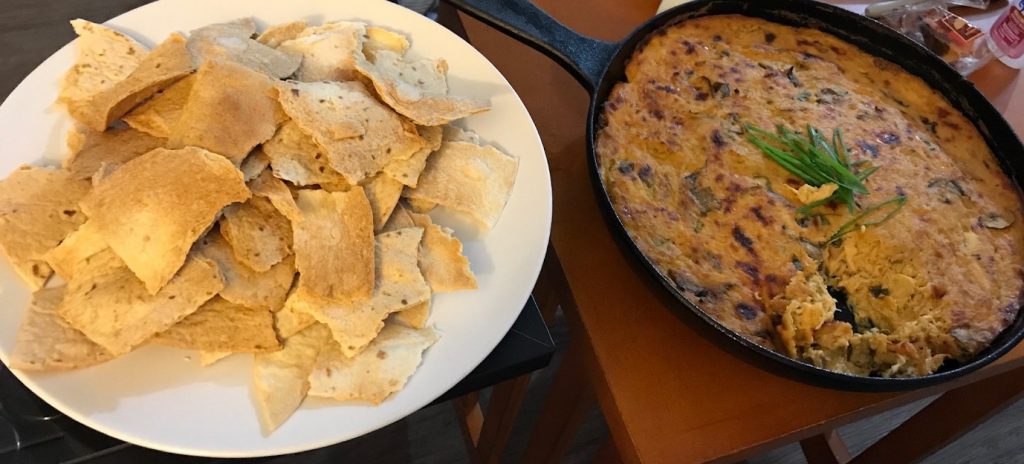Fungi are My Favorite: Spaghetti al Funghi Recipe
Hey, everyone! This week, I wanted to share something that I like to make at home on a fairly regular basis and a recipe to use it in. Mushrooms are one of my all-time favorite foods, and I think that they make a great substitute for meat. They’re packed full of protein, fiber, and an immune-boosting antioxidant called selenium. I love the flavor that each different type of mushroom has, and they’re all different! Some of my favorites include shimeji, morel, maitake, oyster, and enoki. When caramelized, they have an incredibly nutty and rich flavor that adds depth to any dish. They’re pretty much one of the best foods ever, spoken by a completely unbiased individual… ????
I think that mushrooms are also beautiful to look at, and for this reason and a few others, I like them to be recognizable in a dish. I rarely cut mushrooms unless they are of the larger variety and cannot be torn. I always tear the mushrooms previously mentioned, and I always save the ends for stock and soup! Because mushrooms are so incredibly versatile, I really like to keep some already cooked off in my fridge for salads, pasta, or whatever we’ve got a hankering for. One of my favorite preparations for these fungi is to caramelize them in brown butter. They turn out to be incredible little flavor bombs that you can add to any dish. You could absolutely substitute out butter for a preferred cooking fat to get the same lovely color. This is as simple as cutting a few knobs of butter onto a sheet pan, browning the butter in the oven, and mixing your cut mushrooms with some salt for seasoning into the brown butter. Once they’re all coated, roast them in the oven at 350 degrees Fahrenheit until they’re well fragrant and golden brown.
One recipe that I’ve developed to use these in is my take on spaghetti ai funghi. Mushrooms that have been browned lend themselves nicely to a cream sauce or something that will push the rich flavor forward. The recipe is very simple, but in the video I have included, I used a red wine jus I made from chicken stock (not necessary, but it’s what I had). Using regular chicken stock works perfectly well for this recipe and is usually what I do. It is also perfectly fine in this recipe to brown the mushrooms in a pan first and then build your sauce from there.
Ingredients:
- ¼ lb. enoki mushrooms
- ¼ lb. shimeji mushrooms
- ¼ lb. oyster mushrooms
- 8 oz. dry spaghetti
- 1/3 cup chicken stock
- ¾ cup heavy cream
- Fresh cracked black pepper to taste
- Parsley (I toasted mine for a little texture)
- 1 tbsp. butter
- 1 egg yolk
Procedure:
- Salt a large pot of water and bring to a boil.
- Prepare your mushrooms by tearing them apart.
- Brown the butter in a sauté pan and add the mushrooms.
- Once the mushrooms are tender and caramelized, deglaze with chicken stock.
- Reduce the chicken stock down until it becomes syrupy and add the heavy cream.
- Reduce the heavy cream until it just starts to thicken and coats the back of a spoon.
- Cook your spaghetti to al dente and add to the cream sauce with a splash of pasta water.
- Separate one egg, store the whites, and keep the yolk out.
- Once the pasta is coated with sauce, season to taste with salt, cracked black pepper, and parsley.
- Finish the dish while still hot by stirring in an egg yolk. (The residual heat cooks the yolk without turning it solid.)
When I first started making this recipe, I was in love. It’s a fairly simple dish to make and it tastes so luxurious. You really don’t need a lot of it to fill you up, and it has an outstanding roasted mushroom flavor. I like to go heavy on the cracked black pepper because it adds a nice spice to the very rich dish. I hope that this has inspired you to cook with mushrooms more and maybe even try them as a substitute in your favorite meat dish. I guarantee you’ll be surprised at just how flavorful they are! Thank you for reading and happy cooking!

 Barbeque Chicken Dip Ready for Game Day Action!
Barbeque Chicken Dip Ready for Game Day Action! Steven Walsh
Steven Walsh Meghan Young
Meghan Young